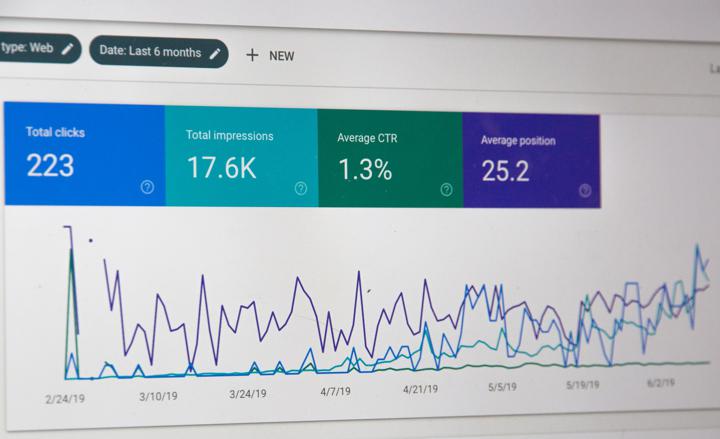It’s not uncommon when I ask the question of a landscaping client “Who is your target market” they respond with “anyone”. 90% of the time it’s the answer you hear, but it’s one of the most detrimental things you can be doing with your marketing. And today we’re going to explore how and why identifying one specific market and targeting your marketing specifically at them is the best way to use your marketing budget.
What is your marketing for - “Getting your name out there”
It’s incredibly common to find out the main reason people marketing their business is to “get their name out there”. It’s not a surprise that this is the case as the majority of the marketing you experience on a daily basis is for this exact purpose. The majority of marketing you experience is designed so that when you want buy a drink, or buy a beer, or want to buy a new piece of clothing, that one brand or business jumps to mind and you go out and buy that product. However, this is mass marketing for big brands and only works for huge companies with huge marketing budgets to burn.
But you don’t have a mass market product and you (likely) don’t have millions in marketing budgets to burn. So if you are approaching your marketing in this way - to “get your name out there” - this article will show you why there is a much better way,

'Direct Response Marketing' - the best way to market your services
The single most effective method of marketing for smaller businesses like landscape garden businesses is 1-to-1 marketing, (direct response marketing). The idea of this type of marketing is you want a people to see and respond in a specific way to your ad. You want them to call you, email you, fill out a form, whatever it is. Essentially, you want your audience to get in touch immediately after they see your ad.
A successful direct response ad offers a responder something in exchange for some information. They give you their email address, you give them an information leaflet or a voucher.
The difference between this and simply “getting your name out there” is that the ad is specific about it’s goals. You want the viewer to do something specific. The mass marketing technique would simply involve pushing enough information out into the world, that when this person wants landscaping services - which could be now, next month, next year, or never! - your name is the first one they call as you are the first thing they think of. The chance of the latter working is very low unless you have huge, huge budgets.
Direct response marketing is the secret weapon for small marketing budgets. It allows you to spend less money, for better results. A no brainer! However, there a few things you need to do to really maximise the effectiveness of this type of marketing with the very first thing being you need to specify your target market. This is important, as if you don’t specify and you decide to target everyone with your direct response marketing, this will get very expensive very quickly. Direct response marketing is an opportunity to make every £pound go further by only showing the ad to people how you really want to see it. This is sometimes called ‘niching’.

Maximising your budget - establish your niche
When you have decided on the exact type of person you want to respond to your ads, you can spend less money on your ads. Imagine you only want farmers to see your ad, but you show it to everyone. You spend £100 showing this ad to 10,000 people, of which only 20 are farmers. You’ve effectively spent £5 per person you want to see your add. However, if you only run this ad to farmers, this same ad would have cost you £0.20 to show to all 20 of your farmers! It’s a super powerful weapon that every business should be using.
By aiming your marketing at one specific type of customer, you can see just how much further your budget can go! But it also has the side-effect of making your price more irrelevant. If you marketing speaks directly to the single type of customer, they will pay over the odds for a service that is specifically geared up for them.
Direct response - smaller budget, more customers, better price. It’s the secret weapon you need to know about.

Identify YOUR target market - The P.V.P Index
The chances are you have an idea of a few “market segments” you service already, but what is the best way to decide on how to focus your marketing? How do you decide which segment is best to focus on? Should you focus on your porcelain jobs? Should you focus on 1-day patio projects?
The most effective way to decide on the target market you want to service is to give each segment a point score according to what is known as the P.V.P index.
P.V.P stands for Personal Fulfilment, Value to the Market & Profitability.
Using the P.V.P Index - Scoring each market segment
In order to use this P.V.P index, you need to identify all the market segments you feel you service. We’ve gone with an example of 4 different markets you might deal with, but it may be more for you depending on how varied your offering currently is.
Here are our 4 example market segments that a landscaper may service: Low maintenance senior gardens, high-end garden transformations, 1-day patio installs & artificial sports pitches. By running each of these through the P.V.P index, one may stand out as the best option for you to pursue more aggressively.
For each marketing segment, give it a rating our of 10 for each of the P.V.P ratings:
- Personal fulfilment (P) - how much do you enjoy this type of work?
- Value (V) - how much does this market value you and want to pay you?
- Profitability (P) - how much profit is left at the end of a job?
Lets look at each of the 4 in turn:
- Low-maintenance: P8, V6, P7 (21)
- High-end: P6, V7, P10 (23)
- 1-Day installations: P9, V5, P8 (22)
- Artificial sports pitches: P5, V8, P6 (19)
Of course your numbers will vary a lot depending on the type of work you enjoy and the type of customers you want to deal with, but these are just examples to give you a bit of guidance. From our examples, you can see the high-end transformations come out on top, so while you can still take on other types of work, it’s sensible to focus marketing on high-end transformations in this case. Now you’ve identified your market segment, we can now start to ask questions about the exact type of person that makes up this segment.
- What type of person do you do these jobs for?
- What are they afraid of?
- What keeps them up at night?
- What do they do for work?
- What makes them mad?
- What frustrates them on a daily basis?
- What trends do they pay attention to?
- What do the desire the most?
- What media do they consume?
- What does their day look like?
- What is their dominant emotion?
- What is the ONE thing they crave?
All these questions really help you create an image of the exact person you are marketing for, as well as how to market it exactly for them.

Putting your PVP discover into practice - Create an ‘Avatar’
Now you’ve got an idea of how you should be aiming your marketing, there is one final task we can do to really drive home the vision of the person we are marketing for. The best thing you can do with this information is to ‘create an avatar’. This means writing a detailed description of the ideal customer you are marketing for. It might sound like a silly corporate exercise, but having a really firm image of the customer will supercharge any marketing by making sure it is aiming for someone specific.
The aim is to write a description as though it was for someone you are incredibly close with, or know incredibly well. It’s a completely theoretical person, but the description should be as detailed as possible to create the most vivid image you can. So let’s try an example.
As you’ll already know, the high-end transformations are reserved for successful individuals. The £20,000+ jobs are going to be reserved for a specific type of person. Successful business owners, or high ranking corporate employees for example. Whichever it ends up being, a high-end transformation is usually a show piece. This avatar will likely want their garden to act a show piece and use a new garden as an opportunity to flex what they have achieved. So what might this tell is about the rest of their life and personality?:
- Name: David Smith
- Age: 50 years old
- Owns a successful telecoms company in your local area. The business was started about 10 years ago and is proving to be very successful at the moment.
- He's got a masters degree in business communications.
- He is married with two children. One currently at university studying law and one about to finish their a-levels at a private school.
- He lives in one of the nicest areas in your town, in a large 5 bedroom house. He and his wife have separate luxury cars that are never more than 2 years old. His wife has a Range Rover Evoque and he drives a Mercedes S class. They also have a spare car for their children to use which is a Volvo with extra safety features.
- His telecoms business has 20 staff members and he rents a large office space in the centre of the town.
- The business turns over £6 million per year and comes in the form of providing a complete telecoms solution for large corporate clients.
- The majority of staff are sales staff, with only a number of people helping with admin and customer service.
- He is always behind on paperwork as the admin department is understaffed. He focuses on extra sales so is always expanding this side of the business, but admin tasks are a source of stress.
- He often feels stressed out by his business growth as it is constantly evolving, adding more stress all the time. But his house and cars and privately educated children are a source of great pride that make the stress worth it.
- His garden is the only part of this house that he isn't that proud of. His home is exceptionally well kept, and he likes showing it off to impress his friends. However, his garden is underutilised because it hasn't had the same level of work put into it.
- He loves golf. When he gets away from his business, golf helps him relax. He has the best golf clubs on the market and spends most weekends on the course. He loves playing golf with his friends and associates.
- He invests in a few individual stocks and gets his advice from the financial times. He also has a lot of money in specific funds from JP Morgan after getting advice from his colleagues.
- He reads the FT and the Times where he gets most of his news and information. He also listens every day to "today" on Radio 4 every morning.
- He's addicted to his phone and is on it all day. Apart from when he's on the golf course, he's constantly checking his phone for business updates and breaking news.
- He has a small social media presence where he likes to share pictures of his home and family, but there is a surprising lack of garden on show!

Conclusion - your marketing needs to speak to this new avatar directly
Does this not just create a really clear image of who you want to be dealing with? A busy and successful business person who loves to show off what he has achieved. When you are marketing anything - when you are putting any information on your social media, or website or whatever it is, it needs to speak to David our avatar directly.
When you know exactly who you need to write to, you will see response rates skyrocket. The types of jobs you want to be working on will be coming thick and fast, and you’ll be spending less time on work you don’t want to be doing, and more time on good, profitable work that does more than just keep you plodding along.
Give this a go and see how this works for you!
